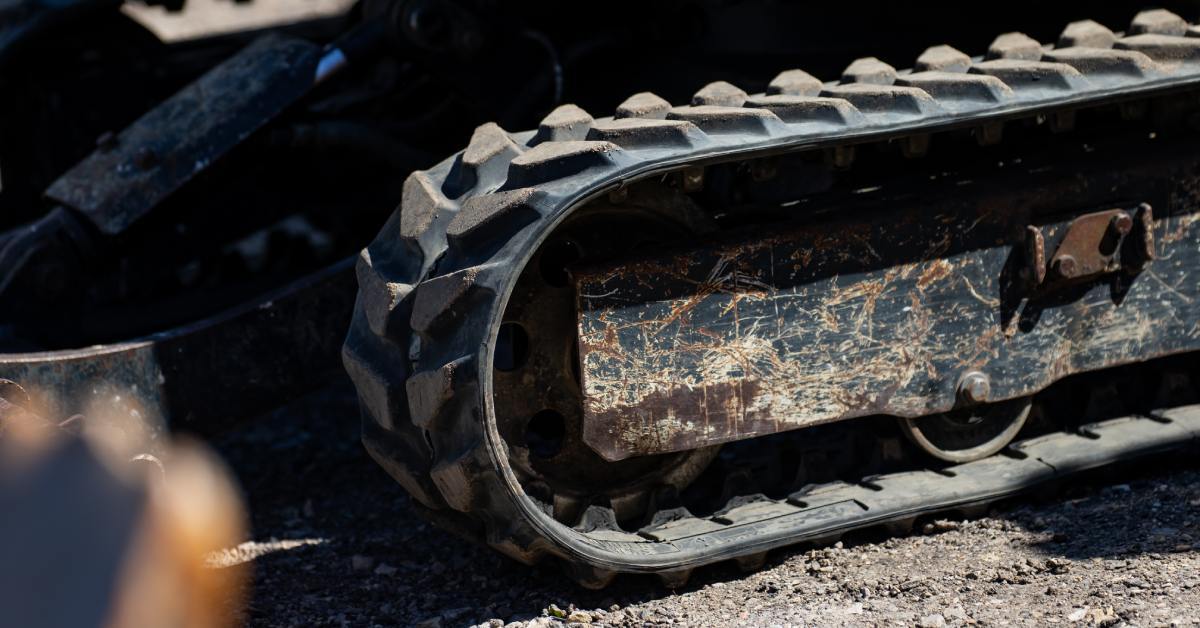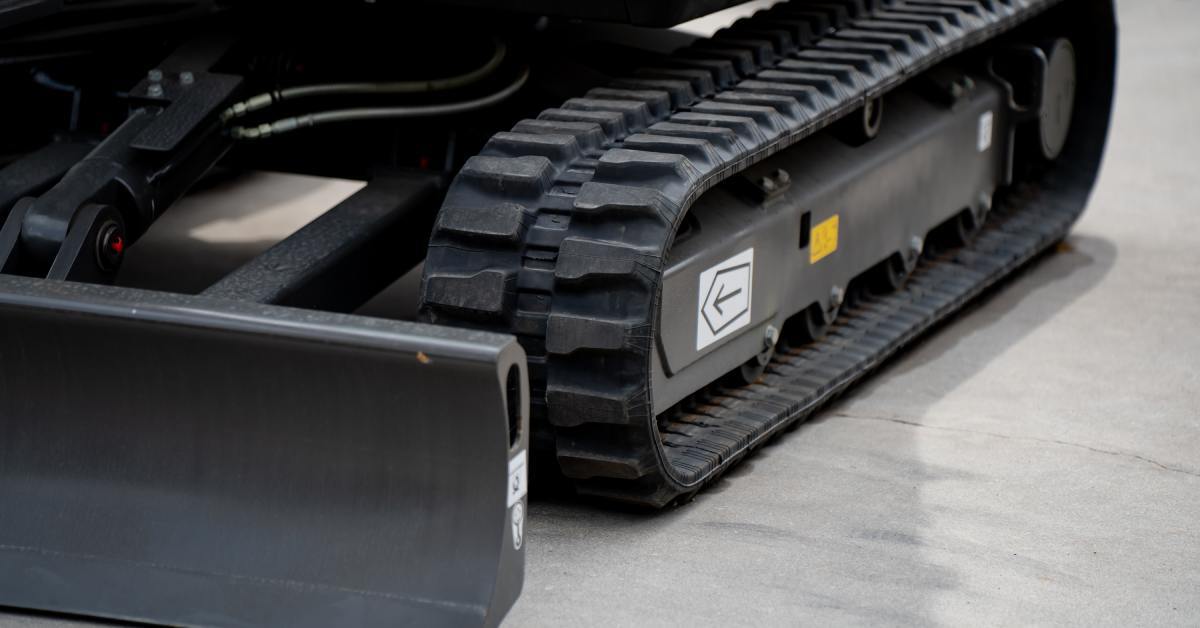Top Factors Affecting the Lifespan of Rubber Tracks
Sep 17th 2025
Sep 17th 2025
Rubber tracks affect the function of heavy machinery used in construction, farming, and industrial operations in many ways. These critical components determine whether your equipment delivers peak performance or becomes a costly liability.
Heavy-machinery operators who master rubber track upkeep often see their tracks last 50 percent longer than those who don’t. The difference lies in recognizing the top factors affecting rubber track lifespan, from initial quality to daily operating practices. Effective equipment managers understand that every decision, from purchase to operation, affects overall costs.
Manufacturers rigorously test materials to ensure flexibility across temperature extremes and durability for demanding applications. Premium tracks incorporate advanced rubber compounds that resist cracking, tearing, and environmental degradation.
Manufacturing processes matter just as much as materials. Manufacturers engineer high-quality tracks with steel reinforcement patterns that evenly distribute stress across the track’s width. The vulcanization process fuses rubber to steel components at the molecular level, ensuring joints remain intact under extreme loads.
Budget tracks might appear identical to premium options, but they often use inferior rubber compounds and simplified manufacturing processes. These cost-cutting measures create weak points that lead to premature failure. What initially seems like savings typically results in frequent replacements and increased downtime costs.
Professionals install tracks with proper alignment, tension, and fit to ensure they operate within design parameters. Incorrect installation creates stress concentrations that accelerate wear patterns. Many track failures result from installation errors or compatibility issues. Professional installation ensures proper alignment, tension, and fit that allows tracks to operate within their design parameters.
Track tension requires particular attention during installation. Over-tensioned tracks experience excessive stress at drive sprockets and guide wheels, leading to premature cracking. Under-tensioned tracks allow excessive movement that causes irregular wear patterns and potential derailment.
Alignment problems manifest quickly when tracks don’t sit properly on drive systems. Even small misalignments create uneven load distribution that concentrates wear on specific areas. This localized stress leads to rapid deterioration that compromises the entire track.
Following manufacturer specifications during installation isn’t optional—it’s essential for achieving expected service life. Professional installers use specialized tools to verify proper tension and alignment before releasing equipment back into service.
Different terrains create vastly different stress patterns on rubber tracks. Abrasive surfaces such as concrete, gravel, and rocky terrain accelerate wear through constant friction and impact. Sharp objects can puncture or cut track surfaces, creating entry points for contamination and further damage.
Soft surfaces such as grass, dirt, and sand generally cause less mechanical wear but present other challenges. Mud and debris can pack into track systems, creating additional weight and stress. Organic materials can promote degradation if not cleaned regularly from track surfaces.
Temperature extremes affect rubber compound properties significantly. Excessive heat makes rubber soft and prone to chunking or tearing. Extreme cold reduces flexibility, making tracks brittle and susceptible to cracking. Operating in temperature ranges outside the manufacturer’s specifications dramatically reduces service life.
Operators who adjust their techniques to combat these factors can improve the lifespan of their rubber tracks. Avoiding sharp turns on hard surfaces, reducing speed on abrasive terrain, and selecting appropriate routes all contribute to extended track life.
Regular cleaning removes debris that causes unnecessary wear and prevents proper track operation. Packed mud increases weight and creates stress concentrations at drive points. Rocky debris trapped in track systems can damage both tracks and undercarriage components.
Regular inspections help identify problems before they lead to failures. Weekly visual inspections can reveal cuts, cracks, or unusual wear patterns that indicate developing issues. Detecting issues early allows for repairs or adjustments that prevent catastrophic failures.
Track tension requires ongoing attention throughout the service life. New tracks stretch during initial operation, requiring re-tensioning after break-in periods. Operating conditions and wear patterns can affect tension over time, making periodic adjustments necessary.
Maintaining a systematic schedule ensures consistent care and maximizes tracking performance. Documentation helps identify patterns and predict replacement timing, allowing for planned maintenance rather than emergency repairs.

Aggressive operating practices create unnecessary stress that shortens track life dramatically. Sharp turns, especially on hard surfaces, generate extreme side loads that can tear track lugs or separate steel reinforcement. High-speed operation increases impact forces and heat generation that accelerate wear.
Machine overloading exceeds design specifications and creates stress levels that compromise track integrity. Heavy loads increase ground pressure and stress at all contact points. Combined with aggressive operation, overloading can reduce track life by more than half.
Skilled operators understand how their techniques affect equipment longevity. Gradual turns reduce side loading while appropriate speeds minimize impact stress. Awareness of track condition and immediate response to problems prevent minor issues from becoming major failures.
Light-duty applications such as landscaping and general maintenance create relatively gentle operating conditions. These environments typically involve softer surfaces, lighter loads, and less aggressive maneuvering. Tracks designed for these applications prioritize ride quality and moderate durability.
Heavy construction and demolition work demands tracks engineered for extreme conditions. Deep lug patterns provide traction in challenging terrain while reinforced construction resists damage from debris and impacts. These applications justify premium track designs that cost more but deliver proportionally longer service life.
Choosing tracks that fit actual operating conditions improves both performance and longevity. Using light-duty tracks in heavy applications leads to rapid failure, while over-specifying tracks for gentle applications wastes money without providing benefits. Analyzing terrain, load requirements, operating hours, and environmental conditions helps determine the best track options.
Visible cracking indicates rubber compound degradation that compromises track integrity. Small cracks can expand rapidly under load, leading to catastrophic failure. Surface cracking might seem minor, but it often indicates internal stress patterns that will progress to separation.
Exposed steel cords signal advanced deterioration that demands immediate attention. Once steel reinforcement becomes visible, track failure becomes imminent. Continuing operation risks damage to expensive undercarriage components and potential safety hazards.
Loss of traction occurs when lug patterns wear down or rubber compounds harden. Reduced grip affects machine productivity and can create dangerous operating conditions on slopes or wet surfaces. Traction loss often coincides with other deterioration indicators.
Unusual wear patterns suggest underlying problems with installation, alignment, or operating practices. Addressing these patterns early can extend remaining track life while identifying systemic issues that affect replacement tracks.
Tractor Zone maintains an extensive inventory of replacement tracks for all major equipment brands, ensuring quick delivery when replacement becomes necessary. Our experts help identify optimal replacement timing to minimize emergencies.

Knowing these seven factors empowers equipment owners to make informed decisions that dramatically impact operating costs. Quality tracks that are properly installed and maintained by trained operators consistently deliver superior value compared to budget alternatives that require frequent replacement.
Successful operations prioritize rubber tracks as essential components requiring proper care and investment. They recognize that small improvements in purchase decisions, installation practices, and daily operations compound over years of service to create substantial savings.
Ready to experience the difference that quality makes? Explore Tractor Zone’s extensive selection of premium-grade rubber tracks and parts designed to deliver exceptional performance in your applications. Our experts stand ready to help you select the right tracks and develop maintenance practices that maximize your investment.